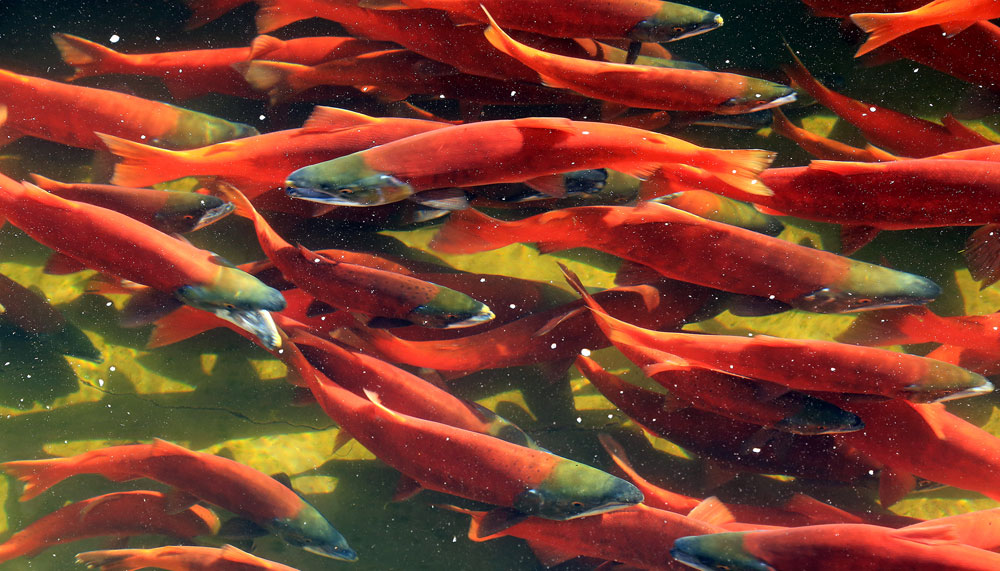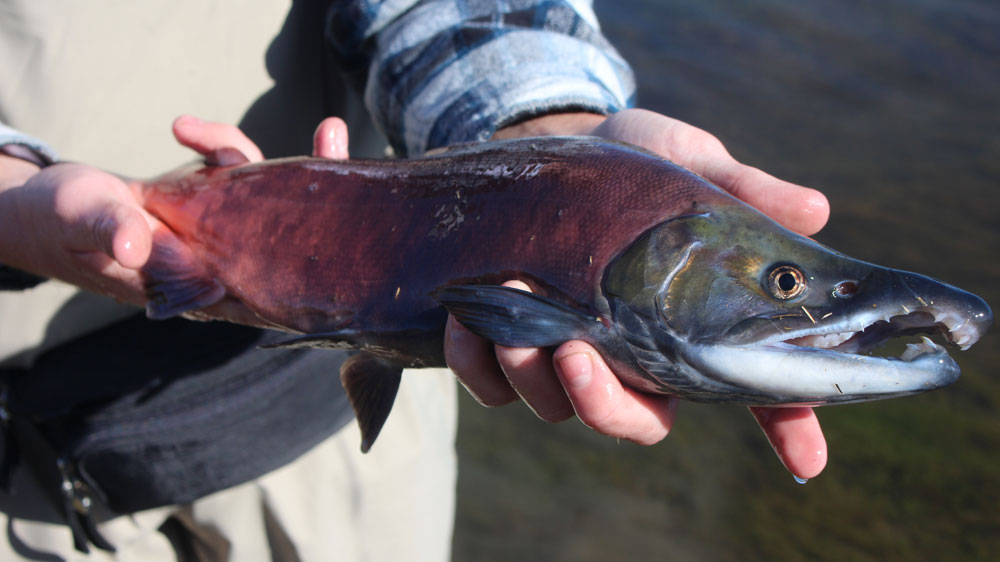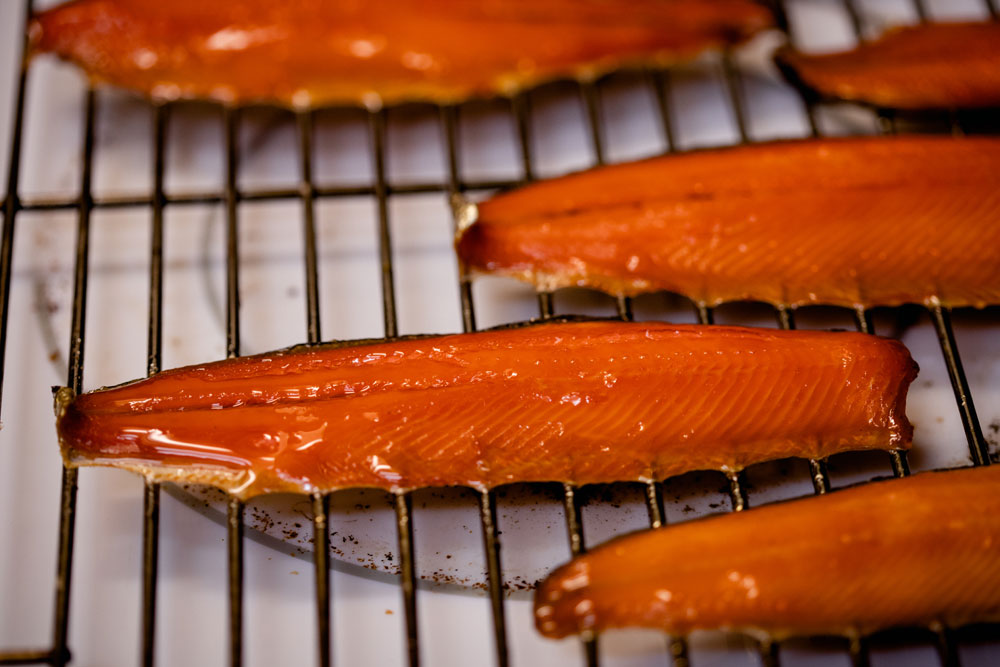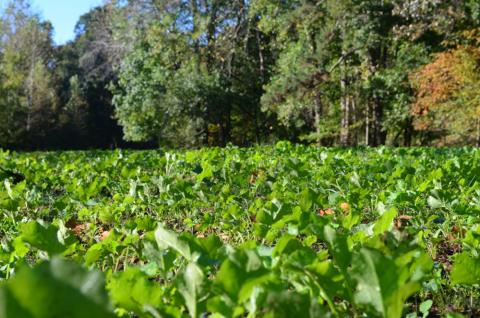The kokanee salmon is one of the most iconic freshwater fish in the angling world. With its hooked jaw and beautiful scales, it's hard to miss. They don't get as big as some of their salmon cousins, but they are fun to catch and even more fun to cook and eat.
Angling for kokanee is subtly different from angling for other fish. These fish mainly dine on small zooplankton, so matching a lure to their desired food is an ineffective method of catching them. An angler must use a loud, flashy lure, with or without attractant, and annoy the kokanee enough to strike.
A blast to troll for and excellent eating, here are some more interesting details about the kokanee salmon.

What Are Kokanee Salmon?
This landlocked fish is a very close relative of the sockeye salmon. They are so close that they are almost indistinguishable, except for one key difference. Kokanee salmon do not make the mythic trip to the ocean and then back to a river or lake to spawn, as many other salmon species do. Instead, the kokanee spend their whole life landlocked in a freshwater system.
They have a limited range and are endemic to the northwest of the U.S., in Oregon, Washington, Idaho, Alaska, and British Columbia. Like other game fish, they've also been introduced into a handful of other states, with populations of kokanee in Utah, Montana, and New York.
The kokanee don't grow very large, topping out at six lbs. They are silver for most of their lives and are known in some parts as silver salmon or silver trout. Once they reach 3-5 years old, they mature and are ready to spawn. This silver fish then turns bright red with a green and black head, and the males develop a hump.
Spawning kokanee salmon are especially vulnerable, as their distinctive red color makes them easy to spot by eagles, bears, and anglers. They use both deep waters and shallow streams to spawn and, for the kokanee, spawning will be one of the last things they will do. After the salmon spawn, they die.
How Do I Catch Kokanee?

These game fish have become one of the most popular types to fish because it's so much fun to catch them, and they are also excellent eating. However, there are some things to be aware of to help you catch this landlocked fish.
Primary food sources for these fish are zooplankton—tiny critters that can be as small as a pinhead, vegetation, insects, and freshwater shrimp. They use special combs on their gills, called gill rakers, to strain zooplankton from the water.
Because their regular food is so small, the general understanding of angling for kokanee is to irritate the fish enough so that it strikes your lure out of anger rather than as a predator. This is often why most of the lures for the kokanee are bold colors—hot pink, magenta, and bright yellow.
Dodgers, spinners, spoons, and even plain red hooks are all successful lures using this technique. Some anglers tip their spinners and spoons with pieces of corn or use an attractant to get the fish's attention. A lead is required, as this salmon has plenty of sharp teeth with which to cut a line.
Some even use unique corn dyes to add even more attractant and flash to the kokanee lure. There are individual poles and reels, most with light to medium action, specially designed for anglers fishing for kokanee.
Along with bright colors and plenty of attractants, the most popular method to catch this fish is trolling. Use a fish finder to locate a school and troll right through the middle of it.
Another more challenging way to catch this salmon is fly-fishing. The ideal time to fish for this species is when the kokanee are spawning in streams, as the fish aren't feeding when they're spawning, and they then exhibit greater levels of aggression.
These are the ideal fish to throw on the grill hours after you've pulled them out of the river. Just be sure to store one correctly after you catch it so it won't spoil before you get a chance to enjoy it in a meal.
How Do I Cook It?

The kokanee are much smaller than their saltwater counterparts and only grow to about 12 to 15 inches. Because of its more diminutive size, you should clean and cook this fish as you would a trout that also lives in the streams and rivers.
Kokanee is best eaten just before the spawning stage. Their flesh is the dazzling bright orange that many anglers long for, and it is richer in flavor than trout but softer than other salmon. If the fish is longer than 12 inches, you can fillet it. You can also butterfly it or gut-and-grill it. The latter method is ideal for camping dinners, and you can leave the skin and head on if you're not fussy.
Even if you butterfly or fillet your Kokanee, leave the skin on when you grill it. This salmon's flesh is soft and tends to fall apart on the grill. Butterflying is useful because it gives you a larger canvas for spices and marinades.
Much like sardines in the Mediterranean Sea, some anglers' favorite methods for cooking their kokanee are grilling it whole or smoking it.
The Takeaway
Angling for kokanee is incredibly fun, as the fish generally don't bite a lure out of hunger but out of aggression. Trolling for kokanee salmon with multicolored lures is a major thrill, and they also make an incredible meal.
Whether you throw it on the grill whole, butterfly it, broil it, or poach it, this beautiful fish is reminiscent of its larger cousins but also has ties to the trout, with which it shares its habitat.



























